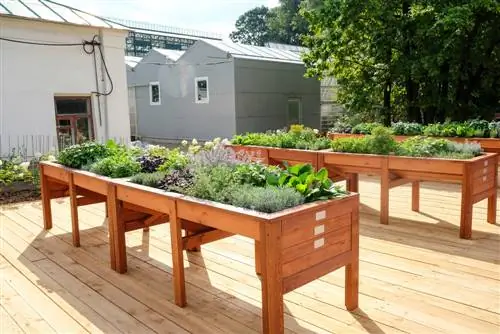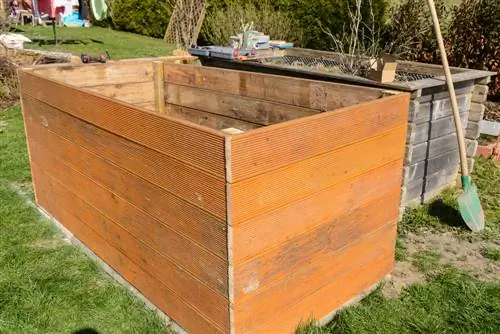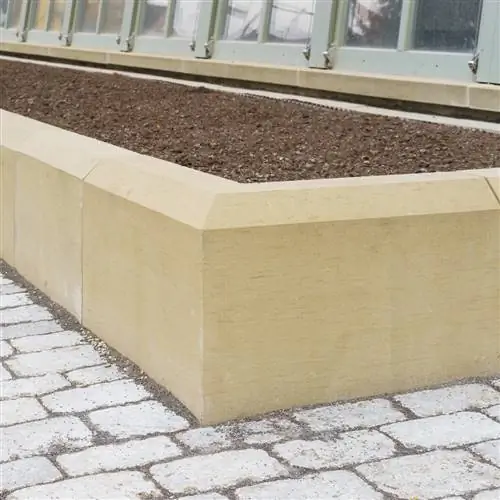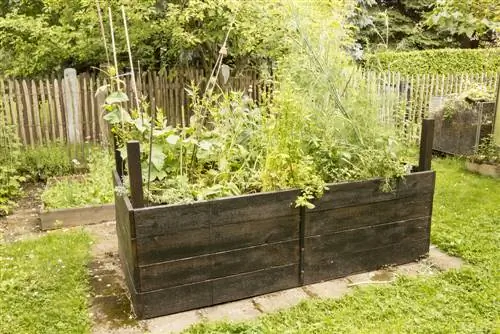- Author admin [email protected].
- Public 2023-12-16 16:46.
- Last modified 2025-01-23 11:21.
Classically, a raised bed always stands above normal garden soil and is only separated from it by a wire mesh. However, there are a number of reasons why you want to build a raised bed without any contact with the ground - be it because this is not possible on a balcony or terrace or because you, as a wheelchair user, want a barrier-free option for gardening.
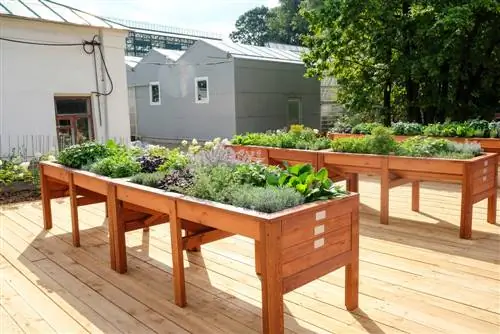
How does a raised bed without ground contact work?
A raised bed without contact with the ground can be used on a balcony or terrace and is suitable for wheelchair users. Table-top raised beds are light, mobile and space-saving, while wheelchair-accessible raised beds ensure barrier-free gardening. Pay attention to drainage to prevent waterlogging.
Classic raised bed without ground contact
The missing base of a conventional raised bed ensures that excess irrigation and rainwater can drain away unhindered. If this soil contact is missing, the water can build up inside the bed - the plants are literally drowned. Nevertheless, direct contact with the ground is not absolutely necessary if you prevent waterlogging in other ways - for example by making drainage holes on the side walls (if the bed is on the terrace, for example) or simply for rain protection (for example with a plexiglass roof (63, 00€ at Amazon)).
Table raised beds for balconies and terraces
If you don't want to miss out on practical gardening in raised beds despite not having a garden, you can use practical raised table beds on the balcony or terrace. These are flat raised beds without any contact with the ground, as the plant container is well above the surface. These special raised beds were specifically designed to meet the structural requirements of a balcony, for which a conventional raised bed is too heavy. However, table raised beds can only be filled with soil (and not in a layered system like a normal raised bed), as the available space does not allow composting. Table beds offer a whole range of other advantages:
- they are light and convenient to transport
- They can be quickly moved to another location - even if they are currently planted
- they don't take up much space and are also suitable for small balconies
- but still offer more planting space than conventional planters
- You save yourself the complicated filling of the raised bed
Accessible raised beds for wheelchair users
Wheelchair users and seniors who are no longer able to walk very well also have to avoid gardening in raised beds. The wheelchair-accessible raised beds were developed especially for these garden enthusiasts. They are recessed on either one or two sides so that a wheelchair or other seating option can easily fit underneath. These raised beds also usually have little or no contact with the ground.
Tip
When watering raised beds without soil contact, make sure that you do not water the plants thoroughly - the lack of drainage means that excess irrigation water cannot flow away.

